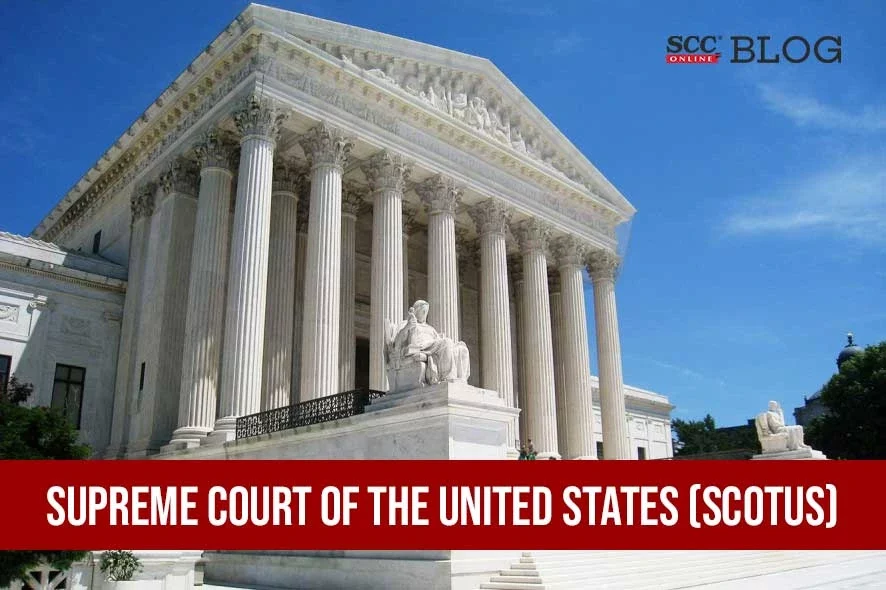Supreme Court of The United States (SCOTUS): In a copyright infringement dispute between Andy Warhol Foundation (hereinafter AWF) and Lynn Goldsmith over the fair use of her photographs featuring renowned singer Prince where the question arose that whether the first fair use factor- “the purpose and character of the use, including whether such use is of a commercial nature or is for non-profit educational purposes,” as under 17 US Code §107(1)1 weighs in favour of AWF’s recent commercial licensing to Condé Nast; the Court with a ratio of 7:2 held that “purpose and character” of AWF’s use of Goldsmith’s photo-graph in commercially licensing Orange Prince to Condé Nast does not favour AWF’s fair use defence to copyright infringement.
Background and Legal Trajectory of the Dispute:Orange Prince is one of 16 works of the Prince Series that Andy Warhol derived from a copyrighted photograph taken in 1981 by Lynn Goldsmith, a professional photographer. Goldsmith had been commissioned by Newsweek in 1981 to photograph musician Prince Rogers Nelson, after which Newsweek published one of Goldsmith’s photos along with an article about Prince. After many years, Goldsmith granted a limited license to Vanity Fair for use of one of her Prince photos as an “artist reference for an illustration.” The terms of the license included that the use would be for “one time” only. Vanity Fair hired Andy Warhol to create the illustration, and Warhol used Goldsmith’s photo to create a purple silkscreen portrait of Prince, which appeared with an article about Prince in Vanity Fair’s November 1984 issue. The magazine credited Goldsmith for the “source photograph” and paid her $400.
After Prince died in 2016, Vanity Fair’s parent company, Condé Nast asked AWF about reusing the 1984 Vanity Fair image for a special edition magazine to commemorate Prince. However, when Condé Nast learned about the other Prince Series images, it opted to purchase a license from AWF to publish Orange Prince. Andy Warhol Foundation for the Visual Arts licensed an image of “Orange Prince”-an orange silkscreen portrait of the musician Prince created by artist Andy Warhol-to appear on the cover of a magazine commemorating Prince to Condé Nast for $10,000.
Lynn Goldsmith was not aware of the Prince Series until 2016 when she saw the Orange Prince on Vanity Fair’s cover. She notified the AWF of her belief that her copyright has been infringed. However, AWF sued her for a declaratory judgment of non- infringement, but Goldsmith counterclaimed for infringement. The District ruled in favour of AWF, but the Court of Appeals reversed the verdict in favour of Lynn Goldsmith.
Before the SCOTUS, AWF contended that the Prince Series works are “transformative,” and that the first fair use factor thus weighs in AWF’s favour, because the works convey a different meaning or message than the photograph.

Black and White photograph of Prince taken by Lynn Goldsmith in 1981. Source: SCOTUS

Orange silkscreen portrait of Prince on the cover of a special edition magazine published in 2016. Source: SCOTUS
Court’s Assessment: The majority opinion was delivered by Sonia Sotomayor, J.* in which Clarence Thomas, Samuel Alito, Neil Gorsuch, Brett Kavanaugh, Amy Coney Barrett, and Ketanji Brown Jackson JJ., joined.
• As per the majority the “first fair use factor” focuses on whether an allegedly infringing use has a further purpose or different character, which is a matter of degree, and the degree of difference must be weighed against other considerations, like commercialism. The specific use of Goldsmith’s photograph alleged to infringe her copyright is AWF’s licensing of Orange Prince to Condé Nast. As portraits of Prince used to depict Prince in magazine stories about Prince, the original photograph and AWF’s copying use of it share substantially the same purpose. Moreover, AWF’s use is of a commercial nature. Even though Orange Prince adds new expression to Goldsmith’s photograph, in the context of the challenged use, the first fair use factor still favours Goldsmith.
• United States’ copyright law encourages creativity by granting to the creator of an original work a bundle of rights that includes the rights to reproduce the copyrighted work and to prepare derivative works. The law, however, balances the benefits of incentives to create against the costs of restrictions on copying and this balancing act is reflected in the common-law doctrine of fair use, which has been codified under the US Law. As most copying has some further purpose and many secondary works add something new, the first factor asks, “whether and to what extent the use at issue has a purpose or character different from the original”. The larger the difference, the more likely the first factor weighs in favour of fair use. A use that has a further purpose or different character is said to be “transformative,” but that is a matter of degree.
• Vis-à-vis AWF’s commercial licensing of Orange Prince to Condé Nast, the Court expressed no opinion as to the creation, display, or sale of the original Prince Series works. Limiting its analysis to the specific use alleged to be infringing in this case, the majority noted that Goldsmith’s copyrighted photograph has been used in multiple ways. In the context of Condé Nast’s special edition magazine commemorating Prince, Court pointed out that the purpose of the Orange Prince image is substantially the same as that of Goldsmith’s original photograph. Both are portraits of Prince used in magazines to illustrate stories about Prince. The use also is of a commercial nature. “Taken together, these two elements counsel against fair use here. Although a use’s transformative nature may outweigh its commercial character, in this case both point in the same direction. That does not mean that all of Warhol’s derivative works, nor all uses of them, give rise to the same fair use analysis”.
• The Court pointed out that fair use is an objective inquiry into what a user does with an original work, not an inquiry into the subjective intent of the user, or into the meaning or impression that an art critic or judge draws from a work.
• The Court further pointed out that the purpose of AWF’s recent commercial licensing of Orange Prince was to illustrate a magazine about Prince with a portrait of Prince. Although the purpose could be more specifically described as illustrating a magazine about Prince with a portrait of Prince that portrays him somewhat differently from Goldsmith’s photograph (without having any critical bearing on her photograph), that degree of difference is not enough for the first factor to favour AWF, given the specific context and commercial nature of the use. “To hold otherwise might authorize a range of commercial copying of photographs to be used for purposes that are substantially the same as those of the originals”.
• It was further noted that many of Andy Warhol’s works, and particularly his uses of repeated images, can be perceived as depicting celebrities as commodities; but even if such commentary is perceptible on the cover of Condé Nast’s tribute to “Prince Rogers Nelson, 1958-2016,” on the occasion of his death, the asserted commentary has no critical bearing on Goldsmith’s photograph, thus the commentary’s claim to fairness in borrowing from her work diminishes accordingly and on the other hand, the commercial nature of the use looms larger. Furthermore, because AWF’s copying of Goldsmith’s photograph was for a commercial use so similar to the photograph’s typical use, a particularly compelling justification was required to be furnished. Copying the photograph because doing so was merely helpful to convey a new meaning or message is not justification enough.
• Goldsmith’s original works, like those of other photographers, are entitled to copyright protection, even against famous artists. Such protection includes the right to prepare derivative works that transform the original. However, Goldsmith’s photograph of Prince, and AWF’s copying use of the photograph in an image licensed to a special edition magazine devoted to Prince, share substantially the same commercial purpose. AWF has offered no other persuasive justification for its unauthorized use of the photograph.
• The majority cautioned that four statutory fair use factors may not “be treated in isolation, one from another,” but instead all must be “weighed together, in light of the purposes of copyright,”. However, since AWF had challenged only the Court of Appeals’ determinations on the first fair use factor in Andy Warhol Foundation for the Visual Arts, Inc. v. Lynn Goldsmith, 2021 SCC OnLine US CA 2C 1, the SCOTUS majority while holding that first fair use factor favours Lynn Goldsmith, affirmed the decision of the Court of Appeals.
Dissenting Opinion:
• The dissenting opinion was delivered by Elena Kagan, J., who was joined by John Roberts, CJ. The dissenting Judges noted that as per majority’s opinion, it does not matter that the silkscreen and the photo do not have the same aesthetic characteristics and do not convey the same meaning. It does not matter that because of those dissimilarities, the magazine publisher did not view the one as a substitute for the other. All that matters is that Warhol and the publisher entered into a licensing transaction, similar to one Goldsmith might have done. Just because the artist had such a commercial purpose, all the creativity in the world could not save him.
• It was pointed out that the afore-stated doctrinal shift does not serve copyright’s core purpose. The law does not grant artists monopolies for their own sake. It does so to foster creativity.
• The dissenting Judges noted that Andy Warhol made fair use of Goldsmith’s copyrighted photo by transforming it. Warhol, in making a Prince portrait from the Goldsmith photo, added something new, with a further purpose or different character. They stated that the majority opinion reveals that they have never actually looked at these images, much less that it has engaged with expert views of their aesthetics and meaning. “The description is disheartening. It’s as though Warhol is an Instagram filter, and a simple one at that”.
• The Judges cites several examples in literature, paintings and music explaining in detail the transformative works in each case. Citing a similar example of Velázquez’s portrait of Pope Innocent X and Francis Bacon’s Study After Velázquez’s Portrait, the dissenting Judges showcased that how Francis retained the subject, scale, and composition of the Velázquez original painting in his rendition. “Look at one, look at the other, and you know Bacon copied. But he also transformed. He invested his portrait with new “expression, meaning, [and] message, converting Velázquez’s study of magisterial power into one of mortal dread”.
• The dissenting Judges stated that the majority treated creativity as a trifling part of the fair-use inquiry, in disregard of settled copyright principles and what they reflect about the artistic process. “In declining to acknowledge the importance of transformative copying, the Court today, and for the first time, turns its back on how creativity works”. They further added that in failing to give Warhol credit for that transformation, the majority distorts ultimate resolution of the fair-use question. “It will stifle creativity of every sort. It will impede new art and music and literature. It will thwart the expression of new ideas and the attainment of new knowledge. It will make our world poorer”.
[Andy Warhol Foundation for the Visual Arts Inc. v. Goldsmith, 2023 SCC OnLine US SC 19, decided on 18-05-2023]
*Justice Sonia Sotomayor delivered the opinion of the Court
1. 17 U.S. Code §, 107 – Limitations on exclusive rights: Fair use | U.S. Code | US Law | LII / Legal Information Institute (cornell.edu)






